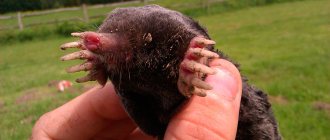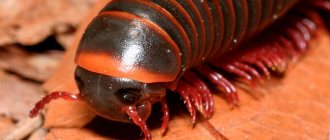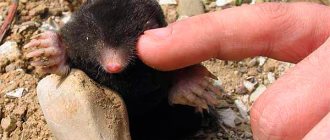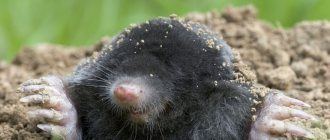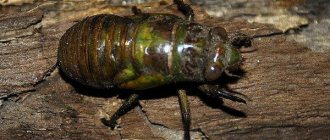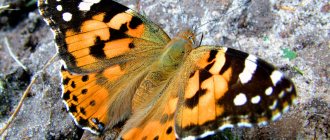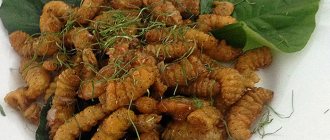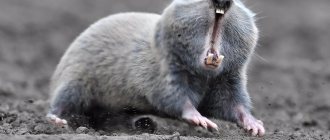- Mole habitat
- What does a mole eat?
- Can the mole see?
- The benefits and harms of moles
A small mole animal that lives underground, has an elongated body up to 20 cm long, covered with soft velvety fur of a dark gray or black shade. Due to the fact that the pile does not have any specific direction, the mole can easily move underground in any direction. This is a special adaptation to the mole's habitat.
The mole has well-developed front paws, spade-shaped with long claws. With them he rake the ground, making underground passages up to several tens of meters long per day. At a depth of about a meter, the mole makes a nest, usually under the roots of trees, lining it with moss and leaves.
Mole habitat
Moles are common on the Eurasian continent in the European part of Russia, in the Urals and even in Western Siberia. The border of their habitat in the east is the confluence of the Ob and Irtysh rivers. They like soft, pliable soil that can be easily dug, and avoid dry and swampy areas. They can be found everywhere: in vegetable gardens, forests, floodplains, meadows and other places.
Lifestyle
Moles are convinced loners, they live exclusively individually in a personally dug and equipped system of underground passages and rooms. With the exception of sleep, the mole is busy searching for and eating food. If the hunger is strong, the victim is sent to the stomach directly at the place of capture; if one can be patient, he is dragged down and there he is leisurely eaten.
The exception is the breeding season. The mating season falls at the end of April - beginning of May.
The friend carries the offspring for about a month and a half, then feeds it for about another month. The moles are growing up and the relationship between them is beginning to deteriorate - which means it’s time to move on to an independent adult life. By the end of August, the new generation finishes settling in and begins to develop its own territories.
What does a mole eat?
There is a wide variety of food underground, including earthworms, the larvae of various beetles and butterflies, small insects, slugs, spiders, as well as small frogs and lizards. The mole eats all this.
Since this small mammal has very active metabolic processes, the mole is forced to eat quite often, and in winter, contrary to popular belief, the mole does not hibernate at all, so the need for food, although small, is still there. In order not to die of hunger, he prepares food for himself in the fall. Basically, the reserves consist of earthworms, which he bites through the head to prevent them from crawling away. The lifespan of a mole on this diet is about 5 years.
Burrow construction
The mole spends most of its life underground. Only to develop a new area does it come to the surface. The animal digs two types of tunnels:
- veins;
- search engines
The first ones are also called nests; the mammal rests and hides in them during the cold season. They lie at a depth of 10−90 cm, and their diameter is only 5 cm. Closer to the surface, the mole makes search passages. He digs them so that earthworms and other underground invertebrates live nearby. The network is extensive, it can occupy significant areas - hundreds of square meters. Moles leave traces behind them: soil rollers that appear due to the swollen arches of passages.
The animal digs the ground with its front paws, and rests against the already compacted walls of the hole with its hind paws. At a depth of 10 cm, the mammal can no longer raise its head, so it throws the soil to the surface.
These heaps are called molehills; they reach 15–25 cm in height and up to 1 m in diameter. They are usually gathered in small groups. Molehills are the only sign of the presence of moles on the site that a person can detect.
How a mole sees
Perhaps the most interesting question concerns the mole's vision, or more precisely, whether the mole has eyes at all. In the cartoon about Thumbelina, we are used to seeing a blind mole with glasses. Although many people think that the mole is completely blind, this is not true. The mole has eyes, but they are very small and completely useless underground, which is why the mole has poor eyesight. Apparently, adaptation to the mole's habitat led to the disappearance of the eyes, but the development of the sense of smell and touch, which allows one to find food in pitch darkness by smell and touch.
Animal species
In total, about 40 species of moles are known. Some of them are quite common, others are very rare. They differ in appearance, habitat and behavioral characteristics. Main types:
- European or ordinary;
- Japanese shrew;
- American;
- Siberian;
- Caucasian;
- Ussuri mogera;
- star-nosed
The first species of animal is found in Europe, which is why it received its name. The common mole grows small: body length - 16 cm, weight - no more than 100 g. The Japanese shrew mammal is even smaller, and it is found on the islands of Shikoku, Tsushima, Honshu and Dogo. On the mole's muzzle there is a long proboscis with hairs that capture air vibrations. In search of food, the shrew can climb bushes and trees.
The American mole lives in Canada and the USA. These are black and gray animals with thick fur. The length of their tail sometimes exceeds the size of their body. The animal swims well and can climb trees. The description of such a mammal is similar to the Japanese shrew; biologists consider them to be related species.
The Siberian or Altai mole resembles the European one. But females are very different from males. The round body of males reaches 20 cm in length, they weigh only 150 g, and females grow smaller. Males are usually black or brown, females are gray. This species has no ears at all, but the nose has turned into an elongated proboscis.
The Caucasian mole's eyes are covered with a film. But it has a more subtle sense of smell than other species. The black, silky coat fades with age. The mole, which is called the Ussuri mogera, looks very interesting. This is a large animal compared to its other relatives: body length - 21 cm, body weight - up to 300 g. This mole has underdeveloped eyes, and it is a rare species, therefore measures have been taken to protect it in the Far East, Korea and China.
The North American star-nosed bat or star-nosed fish is so named because of its unusual nose. This part of the body consists of many tentacles, each of them has olfactory receptors. The animal loves water very much and often lives near bodies of water. He swims well and can dive.
The benefits and harms of moles
The mole brings great benefits to the soil, loosening it and providing a flow of air and moisture, as well as destroying many agricultural pests. However, there is also harm from moles for garden trees and shrubs, the roots of which are gnawed by animals. They also destroy earthworms, which are also good for the soil.
In order not to kill the moles themselves, but simply to force them to move, humane methods of mole control are used, for example mole repellers such as Tornado.
| Mole repeller (anti-mole) Tornado OZV.02 The repeller automatically, after a certain pause, produces body vibration and sound. This frightens the rodents living in the soil next to OZV.02, and they leave the protected area in search of a quieter place. more details >> |
Mammal Reproduction
Moles are unsociable, but during the breeding season they make exceptions and show interest in individuals of the opposite sex. Males look for partners underground, where mating takes place. But after that they prefer to live as before. The males return to their nests and are completely uninterested in the female and their young.
The mating season repeats every year, and its seasonality depends on the habitat. It lasts only 2-3 days - until the female responds to courtship and agrees to mate. The mother carries the child for 40 days, then he is born. This is a poorly developed, hairless and completely blind mole. From 3 to 9 babies can be born at one time. Moles belong to the class of mammals, so females feed them with their milk, which is quite fatty.
The cubs develop very quickly; after just a couple of weeks they turn into real moles. The babies begin to eat earthworms. And a month later they dig their first passages underground. At this age, the child leaves his mother and learns to get his own food.
The new generation leaves the parental nest and is looking for areas to settle. Females may even bite the cubs if they want to return home. The life expectancy of a mole is 6-7 years. But in the wild, mammals die earlier due to attacks by predators and diseases.
Beneficial features
The European mole has useful traits. They are expressed in the fact that the animal was previously an object of the fur trade. The mammal has beautiful and durable fur. At the beginning of the last century, moles were hunted for their valuable skins. But the massive catch led to the fact that the animal began to need protection. In 1928 alone, about 20 million skins were harvested.
In the Soviet Union, mole fur clothing became popular in the 1980s. But today in Russia mammals are not hunted, which is why their population has grown. Their numbers also increase due to mild winters, the construction of greenhouses, and the care of lawns and flower beds .
Moles improve the condition of the soil. They make it loose and saturate it with oxygen, which can save the earth from the formation of swamps. Animals destroy pests because they feed on them. Moles eat chafers, mole crickets, and insect larvae.
Insects.Net will save you from annoying and dangerous pests!
If you are tired of fighting insects in your home and not a single purchased insecticide has given the promised results, do not rush to despair. The specialists of the Insekomikh.Net team will take everything into their own hands!
For our work we use only high-quality and modern equipment. All drugs undergo preliminary laboratory tests and comply with GOST requirements. Also, if you wish, you can get a preliminary consultation and voice all the important nuances. Insects will have no chance of survival!
Each client receives a guarantee for the services we provide and can be confident in their quality. You will certainly be satisfied with our joint cooperation and, if necessary, you will already know who to turn to for help.
Contacts and links on social networks can be found on the main page of the official website. Choose Insects.Net and get rid of pests in no time!
Drugs used (0)
In the fight against rodents, Tsunami is used in granules and briquettes, grain with additives, distributed in bait stations and live traps. All these means allow you to quickly and effectively eliminate pest infestations, protecting the owner of the premises and their property from destruction.
Cold fog: technology features
Hot and cold fog in Moscow is a type of insecticidal treatment that has gained popularity among many of our clients. And although the difference between these methods is not so significant, potential customers should know about them.
It is based on the same spraying of insecticide using a special generator. The resulting fog quickly mixes with air and settles in an even layer on all surfaces, including various interior items, panels and the ceiling. However, the particle sizes into which the working composition is converted differ markedly. Characteristic values for hot fog are 5-30 microns, for cold fog – 40-80 microns. Also, the insecticidal cloud of high temperature settles much longer, which allows it to penetrate deeper into small crevices and have an effective effect on insects in the most severe cases.
And of course, the main difference between these two methods is their temperature. Cold fog indicators are as close as possible to the environment.
- 100% safe for the human body and pets;
- a wide range of protection that allows you to get rid of cockroaches, bedbugs, ants and other pests;
- no stains on furniture and wallpaper after treatment;
- saving the family budget: the price of hot and cold fog is in an affordable range for everyone.
Common features in the structure of moles of different species
No matter how different these animals are in size, they have common characteristics that allow them to live underground. Among them:
- An elongated body in the shape of a rounded bar.
- The head has a cone-shaped muzzle that ends with a nose - a proboscis.
- Animal ears are vestigial pieces of skin that look more like twisted ridges protruding from the hair.
- Vibrissae (hard hairs) located on the tail, which help moles move in underground labyrinths in any direction, even backwards.
- The eyes of animals practically do not function, since when living in complete darkness they were replaced by perfectly developed hearing, touch and smell.
- Well-developed small teeth, ranging from 34 to 44 pieces, depending on the type of mole, are not adapted to bite into the ground, but are used for hunting insects and soil invertebrates.
- Animals' fur grows upward and bends perfectly in different directions, rather than covering the body in one direction, as in other mammals, which makes it easier for them to move underground and protects them from pollution.
- The paws of moles are turned palms out and serve as a kind of shovels for discarding earth when making holes.
Depending on where moles live, they differ in the color of their fur, which can range from brown and gray to deep black.
